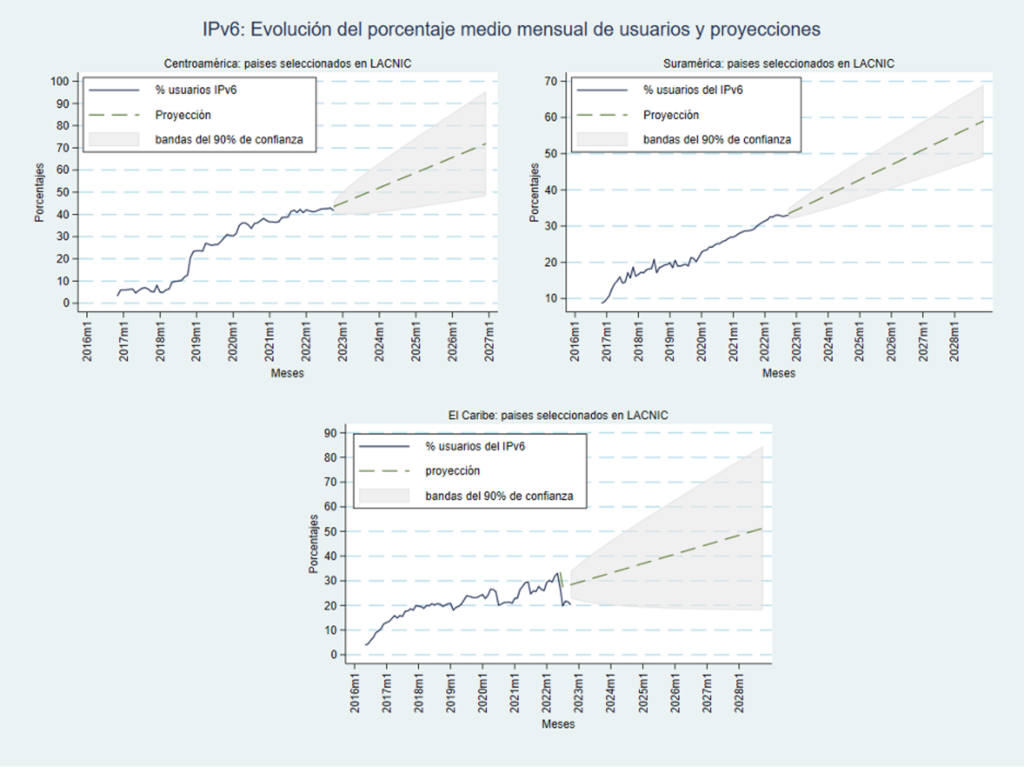Mathematical Forecast of IPv6 Deployment
19/04/2023

Emiro A. Molina-Cuevas, Ph.D.
Together with LACNIC, we conducted an in-depth study to forecast the evolution of IPv6 deployment in the three main regions of Latin America and the Caribbean served by LACNIC: Central America, South America, and the Caribbean.
Our work sought to determine the approximate moment when IPv6 deployment will exceed 50% of Internet users in the countries of the three regions of America, based on a statistical projection assuming a behavior similar to the one we are seeing today.
The main purpose of modeling the evolution of IPv6 deployment is to forecast its behavior and provide input to help organizations across the region make informed decisions through the effective use of the protocol.
For this research we used unobserved component stochastic models (UCM) and monthly estimates of the percentage of IPv6 users in each subregion. Once the model had been created, properly adjusted and configured, we used it to determine the forecasts.
It is important to stress that these are statistical projections and, as such, they are based on the historical behavior of the observations.
A statistical forecast is a quantitative estimate of the most likely future value of a random variable, with a range of likely future values and a specified level of confidence. In this case, we selected a confidence level of 90%.
(Free access, no subscription required)
To determine the monthly estimates, we used the daily data provided by LACNIC, which is available in open data format and based on Google statistics on IPv6 adoption.
Likewise, the percentages of Internet users in the region were taken from ECLAC, CEPALSTAT, the Internet World Stats, and Digital Reports.
According to the projections, Central America will be the first to reach 51% of users with IPv6. This will likely happen in December 2023, with a projected value of 51.45% and an error of 6.54%. South America will reach 51% at the end of January 2027, with a projected value of 51.07% and an error of 4.74%. In the Caribbean, users with IPv6 will reach 51% in October 2028, with a projected value of 51.31% and an error of 20.26%.
The views expressed by the authors of this blog are their own and do not necessarily reflect the views of LACNIC.
